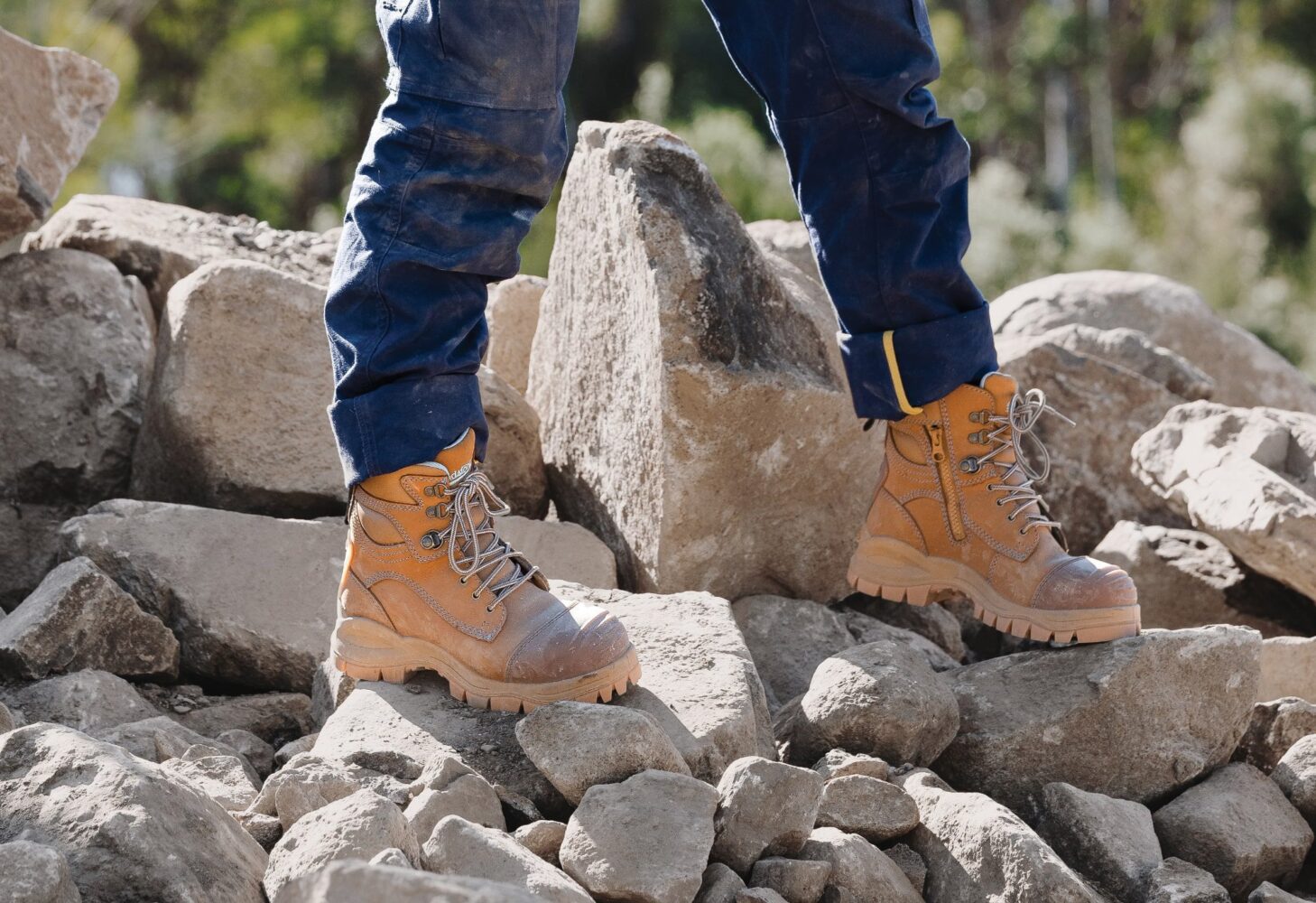ELASTIC SIDE, LACE UP OR ZIP SIDE – WHAT’S THE DIFFERENCE?
The importance of wearing the right safety footwear for the job cannot be underestimated. Australians are now working longer hours than ever, with shifts of 12 hours and longer being common place. This means it is imperative that if you need to wear safety footwear, the correct, most appropriate ‘for the job’ or ‘fit-for-purpose’ footwear is selected. It’s important for workers to be aware of the tools that can help to keep them safe.
Workplace injuries are, unfortunately, still a common occurrence in organisations of all kinds and sizes in Australia despite the implementation of a wide range of work, health and safety programs across all industries. These injuries are a significant drain on businesses’ costs and productivity. According to Safe Work Australia, work-related injuries cost the Australian economy around $60 billion every year, representing almost 5 per cent of the nation’s GDP. Ideally, work-related safety footwear is designed for three purposes with equal focus—occupational safety, functionality and comfort. The best way to take care of feet is to find the most comfortable work boot—that’s appropriate for both the working environment and type of work being done. Poorly fitting work boots not only result in pain but can have significant effects on long term wellbeing. It is also important to get the boot properly fitted to help avoid pressure related pathology. The boot should feel comfortable the moment it’s put on and should not need to be “broken in” before it becomes comfortable. The wrong work boots can put extra strain on joints and bones, which can lead to painful conditions, including plantar fasciitis, knee problems, and shin splints.
“The boot should feel comfortable the moment it’s put on and should not need to be “broken in” before it becomes comfortable.”
Podiatrists say there is no standardised tool for the assessment of footwear suitability. Clinical footwear assessment practices are subjective and tend to focus on the style or type of shoe rather than suitability of the shoe to each individual. Even with detailed education relating to shoe style, quality and size, many people have difficulty selecting footwear, which is appropriate to their particular foot needs. It’s wise to take the time to get the right boots that are designed to mitigate against workplace hazards.

Here, we have collated useful tips on choosing elastic side, lace up or zip sided safety boots.
Elastic side, lace up or zip side—what’s the difference?
Elastic Side
These boots are popular due to their easy on, easy off convenience. Blundstone’s elastic side work boots incorporate a range of different features depending on the style you select. These include water-resistant leather uppers, bump caps and scratchguards in the toe area to protect the leather from abrasions and scuffs and various soling materials with varying heat resistance but all with excellent slip and abrasion resistance.
This type of footwear is highly suitable for those who have slightly wider feet, and is light, comfortable, breathable, with great grip and balance underfoot. Another key benefit of this design is that it provides better ankle articulation. They can be particularly beneficial and a great choice for drivers with active feet and can assist with accurate and precise machine operation.
Lace Up
Lace up boots provide greater ankle support as they can be adjusted for a personalised fit and hold the ankle securely. The ability to adjust the fit and loosen or tighten as required makes them ideal for both wide and narrow feet.
Over-the-ankle lace up boots can protect wearers from a range of hazards including burns, cuts and abrasions, and the bellows tongue on most lace up boots makes it less likely for objects to enter the boot. Lace up boots also have an advantage in that they allow a wearer to adjust the fit of the boot to suit their comfort levels. Laces need to be tied securely to avoid trip threats.
Zip Side
Zip side boots protect the foot by holding the ankle in securely, whilst still providing the convenience of easy on and easy off. Additionally, if you have hand injuries, arthritis, or another condition affecting your dexterity, side zippers can be much easier to use than a traditional lacing system.
The combination of a lace up with a zip side work boot is another great solution and a key time saver. The laces ensure a secure fit around the foot and ankle, and enable a personalised fit. Once the boots are adjusted to your liking, with the added convenience of a zip, the lacing system is only used for minor adjustments.
The comfort experienced by wearers is greatly impacted by the breathability of their footwear. As your feet perspire when they get hot, this can lead to discomfort in boots without moisture-wicking linings. Boots with a side zip can provide temporary ventilation when workers are on their break by simply unzipping rather than taking the boots off entirely to let the heat out and cool down your feet, but it’s important to ensure the zips are closed when employees return to work.
All zip side boots should have additional upper material between the zipper and the foot for comfort, as a zipper directly exposed to the foot can cause chafing and irritation.

Summary
Ultimately, safety footwear should be designed to provide protection, be functional in the required environment and be comfortable. If it meets these criteria, the risk of injury, pain or exacerbation of degenerative conditions will be minimised. Zip side, lace up or elastic side boots can do all these if they are chosen and fitted correctly, but if there is significant movement of your foot in the boot, this means you haven’t got the support needed.
Most mine and construction sites and industrial zones will have a preference for lace up or zip sided footwear depending on the specific roles being performed. This is particularly relevant where extra boot height is required or where there may be a need to remove footwear quickly as the result of an accident.
Conclusion
All Blundstone safety footwear complies to the Australian Safety Standard AS 2210.3:2019. It is imperative that the correct safety footwear be selected for the intended application. Workplace environments and risk factors vary enormously, and HSE risk assessments should be consulted before choosing footwear protection.
Blundstone boots are available online and in stores via select retailers throughout Australia, and are backed by a 30-day comfort and six-month manufacturing guarantee.
Visit www.blundstone.com for more information.
























